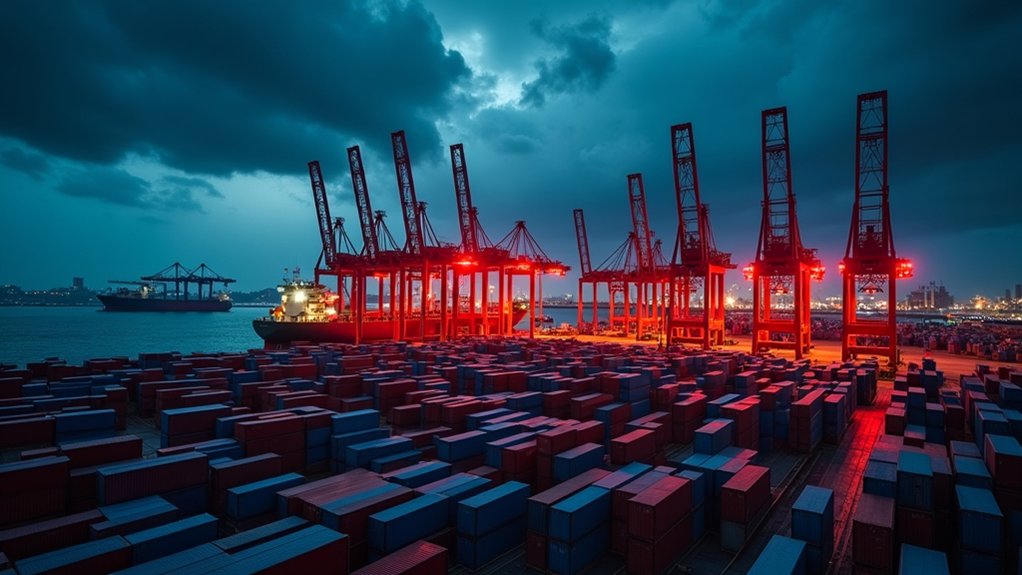As global maritime operations become increasingly digitized, cyberattacks targeting port infrastructure have escalated into a critical threat to international commerce, with incidents rising sharply since 2022 and causing hundreds of millions in economic damages.
The frequency and sophistication of these attacks have prompted NATO to issue urgent security warnings about vulnerabilities in critical logistics networks. Implementing multi-factor authentication systems has become crucial for protecting maritime infrastructure against unauthorized access.
Recent incidents demonstrate the devastating impact of cyber sabotage on global supply chains. The 2023 ShipManager ransomware attack disrupted operations across over 1,000 vessels, while DP World Australia‘s cyberattack created a backlog of more than 30,000 containers, effectively paralyzing significant port operations.
These events follow the precedent set by Maersk’s 2017 NotPetya attack, which resulted in $300 million in damages and highlighted the maritime sector’s vulnerability to digital threats.
Current data reveals an alarming trend in cyber warfare targeting ports. DDoS attacks on European ports have surged 137% year-over-year as of early 2025, with attack volumes exceeding 1.4 Tbps.
The manipulation of security vulnerabilities involved over 400 IP addresses across countries with major logistics hubs, indicating coordinated international efforts to disrupt maritime operations.
Port systems face multiple vulnerabilities that attackers routinely exploit. Many facilities rely on outdated operational technology lacking modern security protections, while unsecured IoT devices, including sensors and scanners, provide entry points for threat actors.
The shipping industry has recorded serious cybersecurity breaches with 178 ransomware incidents reported since 2024, demonstrating the severe scale of threats facing maritime operations.
Weak network segmentation allows lateral movement from compromised IT systems into operational environments, and insufficient visibility into legacy system vulnerabilities delays detection and response efforts.
The economic and geopolitical implications extend far beyond immediate operational disruptions.
Ransomware incidents routinely generate multimillion-dollar damages, insurance premium increases, and legal liabilities. Cascading effects throughout global supply chains affect trade timelines and inventory management, while data exfiltration exposes sensitive contracts and trade routes.
State-affiliated sabotage efforts increasingly use cyberattacks as instruments of geopolitical influence, threatening both commercial and military logistics through hybrid warfare tactics that target strategic port access and critical infrastructure dependencies. Effective defense requires comprehensive international collaboration between maritime authorities and cybersecurity agencies to share threat intelligence and establish standardized security protocols.









